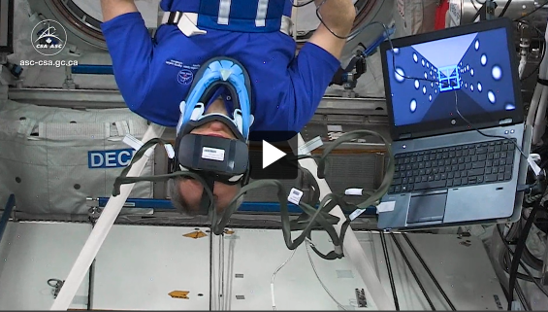Current Projects
Perception of Self-motion in microgravity

Astronaut David Saint-Jacques while doing our experiment in space. You
can watch him talk
about our project here (YouTube)
My mainstay in Toronto is an awesome SPACE PSYCHOLOGY PROJECT under the lead of Dr. Laurence Harris – one step closer to fully automated luxury gay space communism! –, funded by the Canadian Space Agency. We shoot people into orbit and see how this affects their depth perception and the sense of self-motion generated by visual cues. The main idea is that people should weight visual input more strongly in the absence of gravity. How will everything play out? Tune in in a year or so and we’ll let you know!
Here a little presentation
on some preliminary space data, and here the same thing but as a poster.
Prediction of motion during self-motion
So it seems that humans misperceive the velocity of targets in their environment both less accurately and less precisely when they are moving themselves. But do these changes translate to biases in prediction? It’s quite likely that, when we observe motion and judge it incorrectly, then our predictions should reflect these misestimations. But let’s find out!
We had a Registered Report Protocol accepted at PLOS One and are
starting (remote) data collection. If you have a VR headset at home and
are interested to join, drop me a line. Meanwhile, how about you have a
look at a video of the stimulus
(on YouTube).
Motion prediction, self-motion and gravity
We are also looking to extend the basic concept of predicting motion during self-motion by adding another component: the internal model of gravity, or Gravity Prior. If (1) self-motion introduces biases in motion extrapolation, and (2) we use this gravity prior to better predict motion, then self-motion should bias motion prediction less when the motion is consistent with gravity. In practice, the Gravity & Self-Motion experiment will looking something like this (on YouTube).